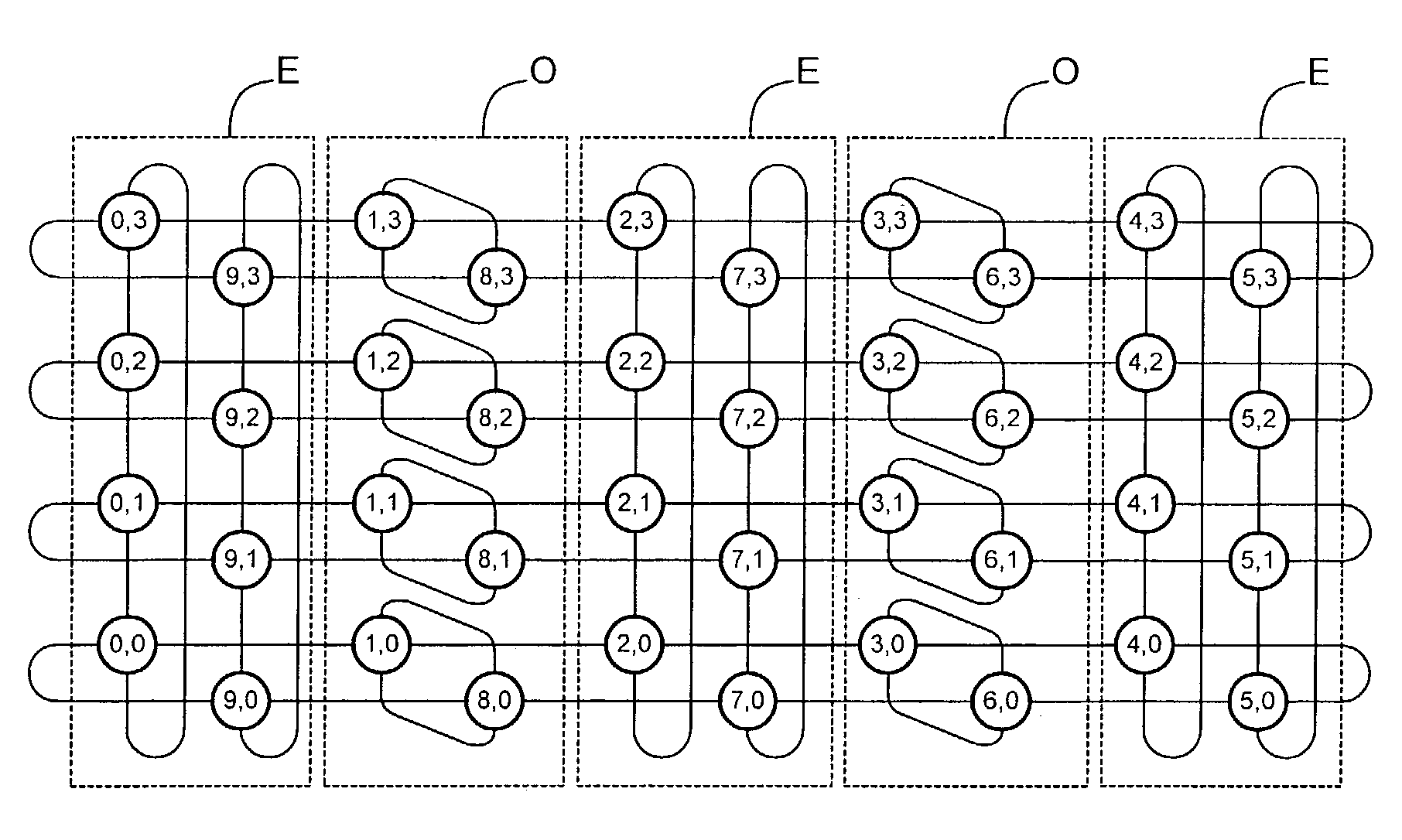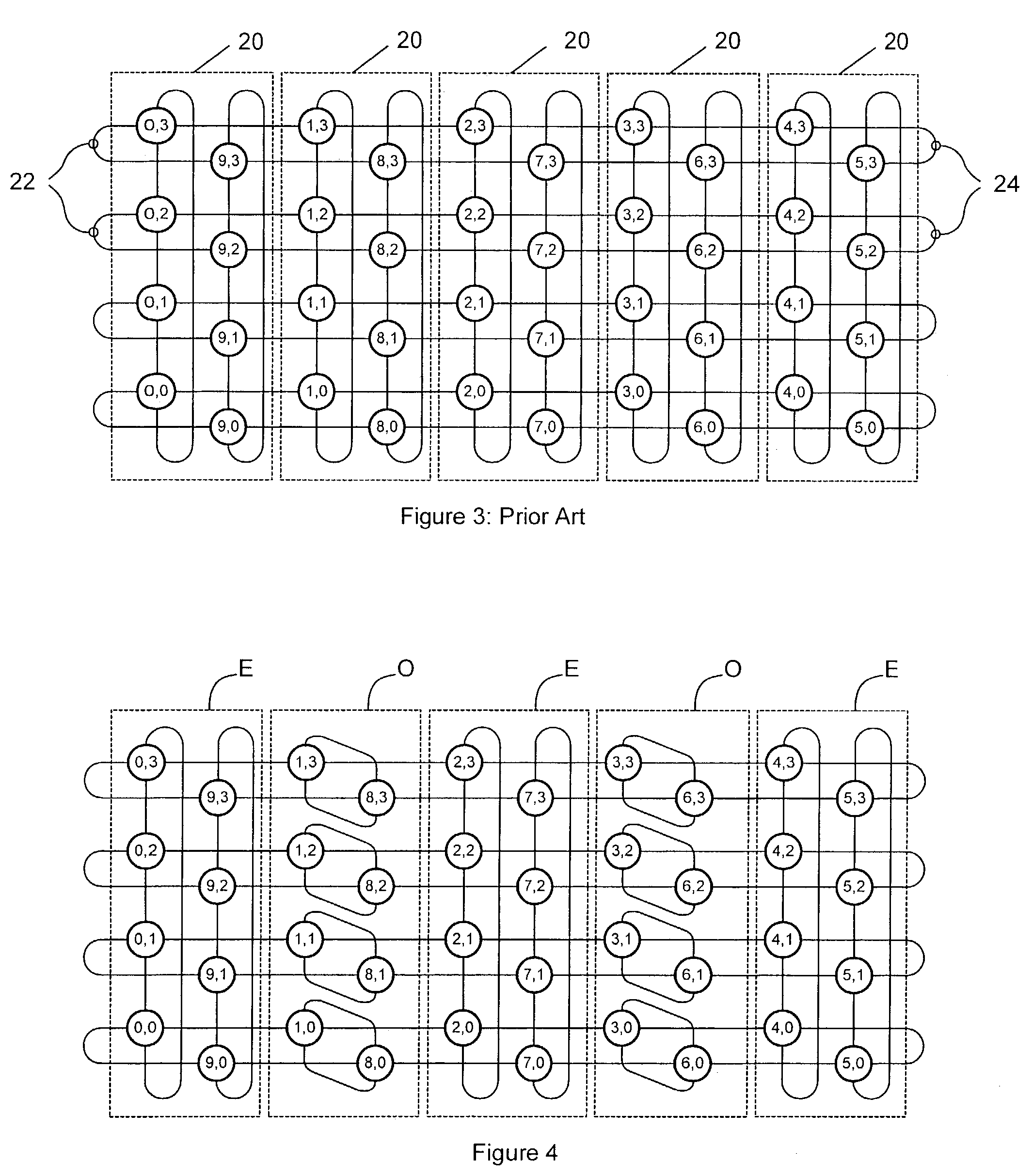Irregular network
a network and irregular technology, applied in the field of irregular network, can solve the problems of increasing the complexity of each node and inherently inefficient, and achieve the effect of reducing this off-backplane communication and good performan
- Summary
- Abstract
- Description
- Claims
- Application Information
AI Technical Summary
Benefits of technology
Problems solved by technology
Method used
Image
Examples
Embodiment Construction
[0034]A network that allows more local communication between nodes that are physically close to one another is shown in FIG. 4. In this network even-numbered backplanes E are wired identically to the backplanes of FIG. 3 while odd-numbered backplanes O connect the nodes on opposite sides of each x-loop that shares the backplane. This arrangement allows a node to access any other node on its backplane in at most six hops and crossing at most two backplane connectors.
[0035]The topology of FIG. 4 is best thought of as a three-dimensional network. The x-dimension selects the backplane, the y-dimension selects a pair of nodes within the backplane (as before), and the z-dimension selects the node within the pair. FIG. 5 shows the same network with the nodes renumbered to correspond to this three-dimensional interpretation of the network. Every node in this network has connections to its neighbors in the x-direction while only ‘even’ nodes have connections in the y-direction and only ‘odd’...
PUM
 Login to View More
Login to View More Abstract
Description
Claims
Application Information
 Login to View More
Login to View More - R&D
- Intellectual Property
- Life Sciences
- Materials
- Tech Scout
- Unparalleled Data Quality
- Higher Quality Content
- 60% Fewer Hallucinations
Browse by: Latest US Patents, China's latest patents, Technical Efficacy Thesaurus, Application Domain, Technology Topic, Popular Technical Reports.
© 2025 PatSnap. All rights reserved.Legal|Privacy policy|Modern Slavery Act Transparency Statement|Sitemap|About US| Contact US: help@patsnap.com



